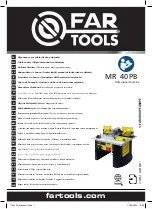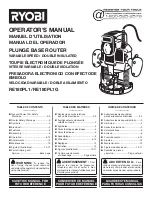
65
Performing Switch Setup Configuration
Information About Performing Switch Setup Configuration
If the IP address and the subnet mask are not in the reply, the switch is not configured. If the router IP address or
the TFTP server name are not found, the switch might send broadcast, instead of unicast, TFTP requests.
Unavailability of other lease options does not affect autoconfiguration.
The switch can act as a DHCP server. By default, the Cisco IOS DHCP server and relay agent features are enabled
on your switch but are not configured. These features are not operational. If your DHCP server is a Cisco device, for
additional information about configuring DHCP, see the “Configuring DHCP” section of the “IP Addressing and
Services” section of the
Cisco IOS IP Configuration Guide
on Cisco.com.
TFTP Server
Based on the DHCP server configuration, the switch attempts to download one or more configuration files from the TFTP
server. If you configured the DHCP server to respond to the switch with all the options required for IP connectivity to the
TFTP server, and if you configured the DHCP server with a TFTP server name, address, and configuration filename, the
switch attempts to download the specified configuration file from the specified TFTP server.
If you did not specify the configuration filename, the TFTP server, or if the configuration file could not be downloaded,
the switch attempts to download a configuration file by using various combinations of filenames and TFTP server
addresses. The files include the specified configuration filename (if any) and these files: network-config, cisconet.cfg,
and
hostname
.config (or
hostname
.cfg), where
hostname
is the switch’s current hostname. The TFTP server addresses
used include the specified TFTP server address (if any) and the broadcast address (255.255.255.255).
For the switch to successfully download a configuration file, the TFTP server must contain one or more configuration files
in its base directory. The files can include these files:
The configuration file named in the DHCP reply (the actual switch configuration file).
The network-confg or the cisconet.cfg file (known as the default configuration files).
The router-confg or the ciscortr.cfg file (These files contain commands common to all switches. Normally, if the
DHCP and TFTP servers are properly configured, these files are not accessed.)
If you specify the TFTP server name in the DHCP server-lease database, you must also configure the TFTP server
name-to-IP-address mapping in the DNS-server database.
If the TFTP server to be used is on a different LAN from the switch, or if it is to be accessed by the switch through the
broadcast address (which occurs if the DHCP server response does not contain all the required information described
previously), a relay must be configured to forward the TFTP packets to the TFTP server. For more information, see
. The preferred solution is to configure the DHCP server with all the required information.
DNS Server
The DHCP server uses the DNS server to resolve the TFTP server name to an IP address. You must configure the TFTP
server name-to-IP address map on the DNS server. The TFTP server contains the configuration files for the switch.
You can configure the IP addresses of the DNS servers in the lease database of the DHCP server from where the DHCP
replies will retrieve them. You can enter up to two DNS server IP addresses in the lease database.
The DNS server can be on the same or on a different LAN as the switch. If it is on a different LAN, the switch must be
able to access it through a router.
Relay Device
You must configure a relay device, also referred to as a
relay agent
, when a switch sends broadcast packets that require
a response from a host on a different LAN. Examples of broadcast packets that the switch might send are DHCP, DNS,
and in some cases, TFTP packets. You must configure this relay device to forward received broadcast packets on an
interface to the destination host.
Summary of Contents for IE 4000
Page 12: ...8 Configuration Overview Default Settings After Initial Switch Configuration ...
Page 52: ...48 Configuring Interfaces Monitoring and Maintaining the Interfaces ...
Page 108: ...104 Configuring Switch Clusters Additional References ...
Page 128: ...124 Performing Switch Administration Additional References ...
Page 130: ...126 Configuring PTP ...
Page 140: ...136 Configuring CIP Additional References ...
Page 146: ...142 Configuring SDM Templates Configuration Examples for Configuring SDM Templates ...
Page 192: ...188 Configuring Switch Based Authentication Additional References ...
Page 244: ...240 Configuring IEEE 802 1x Port Based Authentication Additional References ...
Page 298: ...294 Configuring VLANs Additional References ...
Page 336: ...332 Configuring STP Additional References ...
Page 408: ...404 Configuring DHCP Additional References ...
Page 450: ...446 Configuring IGMP Snooping and MVR Additional References ...
Page 490: ...486 Configuring SPAN and RSPAN Additional References ...
Page 502: ...498 Configuring Layer 2 NAT ...
Page 770: ...766 Configuring IPv6 MLD Snooping Related Documents ...
Page 930: ...926 Configuring IP Unicast Routing Related Documents ...
Page 976: ...972 Configuring Cisco IOS IP SLAs Operations Additional References ...
Page 978: ...974 Dying Gasp ...
Page 990: ...986 Configuring Enhanced Object Tracking Monitoring Enhanced Object Tracking ...
Page 994: ...990 Configuring MODBUS TCP Displaying MODBUS TCP Information ...
Page 996: ...992 Ethernet CFM ...
Page 1066: ...1062 Using an SD Card SD Card Alarms ...
















































